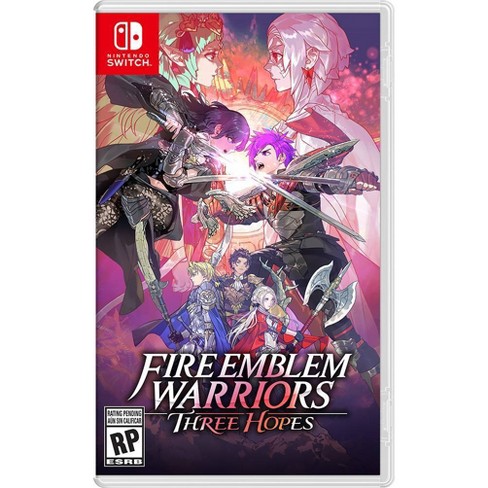

FIRE EMBLEM WARRIORS SWITCH COLLECTORS EDITION CONTENTS SERIES
Nintendo soon greenlit another entry in the series with Fates. This was not only the first entry in the series to surpass 1 million in a fiscal year, but the game also sold several packs of DLC to make a notable increase in Nintendo's digital revenue. The game was landmark success for the franchise, especially in the West. To ensure that the series survived, Intelligent Systems decided to put everything they could in the first 3DS entry included an expanded support system that included Marriage again, simpler objectives, a narrative that tried to tie the worlds from the previous games and regular online content as well as DLC. Brawl released and the protagonist of the two recent games, Ike, replaced Roy as the second Fire Emblem representative. Radiant Dawn was likewise a very unpopular game who barely did better than Path of Radiance and is the second worst-selling game in the series to this day. A sequel was later released for the Wii under the name of Fire Emblem: Radiant Dawn. This marked the start of the decline of the series as Path of Radiance is still the worst selling mainline entry in the series today, showing that it was incredibly unpopular on release.

Following it came Fire Emblem: The Sacred Stones, which was unrelated to the other games and closed the GBA era.įollowing this, Intelligent Systems came back to home consoles with Fire Emblem: Path of Radiance for the Nintendo GameCube. Nintendo decided to bringing the games to the west starting with Fire Emblem: The Blazing Blade for the GBA, which acts as a prequel to The Binding Blade. After the west was familiarized with the series through Smash Bros. Marth, the protagonist of Shadow Dragon and the Blade of Light and Mystery of the Emblem, as well as Roy, the protagonist of the recently releasing Fire Emblem: The Binding Blade on GBA.

Melee, which featured two characters from the series. Around the same time, the Fire Emblem series made its way to the west for the first time via Super Smash Bros. However, development struggles along with the poor performance of the system in Japan led to the title's cancellation with Intelligent Systems moving back to the Super Famicom with a successor to the most successful entry at the time, Genealogy of the Holy War, with Fire Emblem: Thracia 776.Īfter this, they stopped solely focusing on home consoles and released their first handheld game on the Game Boy Advance, which would be their focus for the next three games. The games that followed grew in success in Japan leading to the development of a Nintendo 64 Fire Emblem title. The first game, Fire Emblem: Shadow Dragon and the Blade of Light, was a late Famicom release that caught the attention of the Japanese audience with its challenging gameplay and permadeath system. In later games, achieving max support with characters can unlock alternate classes for a character and give access to Paralogues with new characters. Supports are mostly stuff that develops the background of characters, but they also provide adjacency boosts in a fight. In every game starting with Fire Emblem: Mystery of the Emblem (and excluding Archanean War Chronicles due to the nature of that particular game), units have supports with one another. Each unit also has growth rates, which determine which stats grow upon the unit leveling up. Once the player has moved all of their units, their turn ends and the enemy's turn begins, where their units will move to attack yours.Įach unit is unique in that they have a class, which determines what weapons they are capable of using, how many grid spaces they can move, etc.

During their turn, the player is able to move their units one at a time and attack an enemy if they are within the unit's range. Once a unit has moved, the unit cannot be moved again during that turn. The gameplay in Fire Emblem games are remarkably similar across all games, with each game usually adding something significant to the formula.įire Emblem involves using a handful of units on a grid-based map to defeat enemy units.


 0 kommentar(er)
0 kommentar(er)
